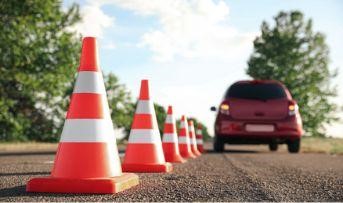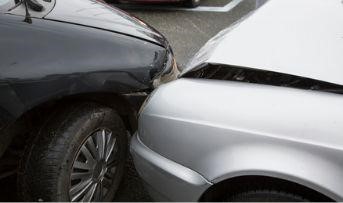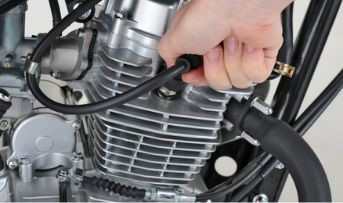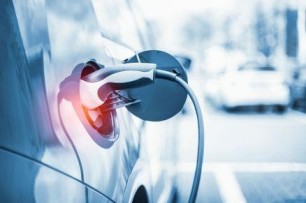General Insurance Blogs, Articles & Updates by - Magma Insurance
Have us call you
- RENEW YOUR POLICY
- BUY NEW POLICY

The perks of buying group health insurance for employees
A group health insurance plan for employees is a group mediclaim plan purchased by a company for all its employees. The employees get basic coverage against common ailments and treatments. The employers usually deduct a certain sum from the CTC of the employees to pay for the premium of the policy. Also, they may decide to either share the premium burden or pay it fully themselves.
This trend of insuring employees' health and well-being has been followed for a long time. It establishes a bond of trust and responsibility the company takes for its employees. But how exactly is group health insurance beneficial? Here are the perks of buying a group health insurance policy for employees.
1. Cost efficient:
Since such policies are bought to cover many people, insurance companies provide them at a good discount. If the employer buys the same number of health insurance plans individually for his employees, it will cost him much more.
2. Motivation booster:
A group health insurance policy is a symbol of the care and concern of an employer for his employees. The employees feel valued that the employer is taking care of them. This acts as a motivation, and they work in a more dedicated and devoted manner towards the company. Also, such policies act as a retention tool. Employees think twice before changing jobs since they feel attached to the employer and the company.
3. Zero waiting period for pre-existing diseases:
A regular health insurance policy provides coverage for pre-existing diseases after 3- 4 years of buying the policy. However, there is no waiting period for the coverage of certain pre-existing diseases, such as diabetes, hypertension, etc., under a group health insurance plan. Employees get full coverage for any possible medical expenditure from day one.
4. Preferential treatment:
The buyers of group health insurance policies are big customers for the insurance companies. Hence, the insurance companies cannot afford to annoy them and have to deal with them as a priority. The employees get preferential treatment at the time of passing of claims.
5. Maternity coverage:
Regular health insurance plans usually do not provide maternity coverage and assistance. However, a group health insurance plan comes with automatic maternity coverage. The newborn child also gets automatic protection under the policy as a dependent after 90 days of birth.
6. Full family cover:
The group insurance plans provide health insurance benefits for the employee and his family. He can avail of the benefits for up to 5 dependents at no extra cost. Family-floater plans under regular policies charge much higher premiums for providing similar coverage.
7. Premium as a business expense:
An employer who pays the premium for a group health insurance policy for his employees can claim it as a business expense. It is treated as a benefit that he is providing to his employees. He can book the expenses in the profit and loss account like a general business expense and save on taxes.
8. Validity of the policy:
As per the IRDAI, an employee can migrate to an individual health insurance policy from a group health insurance plan while leaving or changing his job. He will have to complete some formalities with the insurance company for the same. Also, this depends upon the insurance company to continue or terminate the policy.
9. No medical checkups:
Another benefit of a group health insurance plan is that it does not require any medical checkups of the employees before buying the policy. The usual health insurance plans require a medical checkup before issuing the policy.
Buying a group health insurance for employees is often a win-win situation for the employer and the employees. There are many benefits and perks of such policies, which we have already gone through above. Moreover, such a policy is compulsory for employers and mandatory by law. Choose the best health insurance company in India that takes care of your most valuable assets- your employees.
Click HERE to buy the best health insurance.
Disclaimer: The information provided above is for illustrative purposes only. To get more details, please refer to policy wordings and prospectus before purchasing a policy.

Here is everything you need to know about cat eyes reflectors on the road
Cat eyes reflectors are also known as road studs or raised pavement markers. They are safety devices installed on the roads and reflect or emit light flashes at night. You can commonly see them on roads or highways while driving. Drivers use them as lane markers to guide vehicles on dark roads.
Cat eyes reflectors reflect light to a light source, such as a car’s headlights. Hence, when driving on a dark patch of road, these reflectors reflect back light to your vehicle. This helps you to identify the sides and centre of the road and minimise the chances of a mishap.
Types of cat eyes reflectors:
There are primarily four types of cat eyes reflectors in use.
1. Plastic:
Reflectors made of plastic are the least durable and not as strong as the other types of reflectors. They are good to use on the sides of bridges and highways.
2. Aluminium:
These reflectors are made of aluminium and hence, are strong enough to withstand the load of heavy vehicles. These have reflective objects installed inside them. They are also ideal to use in the middle of the roads because of their strength and durability.
3. Glass:
You will also spot reflectors made of hardened safety glass. They come with a coating on their bottoms that reflect the light back to the source.
4. LED:
LED cat eyes reflectors are the most advanced as they have solar panels on their tops. This acts as their energy source and helps them to emit blinking light at night. They provide the brightest light and have much better visibility than the above three types of reflectors.
Advantages of cat eyes reflectors:
● Enhanced visibility:
The primary advantage of cat eyes reflectors is to make night driving safe and secure and minimise the chances of accidents. They help to make corners of traffic lanes visible at night and ensure that the drivers do not skid away from the roads, especially at dangerous curves.
● Prevent unsafe lane changing:
Cat eyes reflectors mark the lanes on the roads. This ensures that vehicles do not frequently change lanes or swerve from one lane to another, causing accidents.
● Speed control:
Cat eyes reflectors also act as a road rumbling strip. The traffic automatically slows down while passing over them since they act as barriers to speed. Thus, they help to control rash driving.
● Durable and easy to install:
These reflectors are very durable, economical, and easy to install than other lane markers. They do not come out by themselves when attached to the roads. Also, there is very little chance of their theft. Hence, they have a very long life.
● Multi-coloured:
Cat eyes reflectors are multi-coloured. While this increases their aesthetic beauty, each colour has a special meaning too. White reflectors denote lane divisions and centre marking on the roads, and red reflectors denote lines that we cannot cross. Green reflectors denote the lines we can cross, such as entrances to service lanes.
Cat eyes reflectors are excellent warning devices on roads inside cities and highways. They have a special role on highways since there are few streetlights, and vehicles run at high speeds. The governments have increased their usage in recent years. It is a step in the right direction as they enhance the safety and security of all types of vehicles plying on the roads.
Similar to cat eyes reflectors, online motor insurance takes care of our vehicles in the best way possible. Buy motor insurance online and receive the safety and security of insurance combined with the convenience of buying it right from your home or workplace without visiting the insurance office personally. Hence, it is the best form of comprehensive coverage and the most recommended one.
Click HERE to buy motor insurance online.
Disclaimer: The information provided above is for illustrative purposes only. To get more details, please refer to policy wordings and prospectus before purchasing a policy.

The lesser heard facts about health insurance policies
The Covid-19 pandemic has led to a demand for health insurance policies. People are now aware of the importance of health insurance cover in case of sudden hospitalisations and expensive treatments. Moreover, many people also opt for it to avail of tax benefits.
Let us take you through a few lesser heard facts about health insurance plans in India. This will facilitate you to make a better and informed choice if you are also planning to buy a health insurance policy for yourself and your family.
1. NRI health insurance policy:
It is now possible for a non-resident Indian (NRI) to avail of health insurance cover in India. An NRI person will have to submit residence proof along with other necessary documents. Companies use Indian parameters to ascertain the cost of the treatment and premium amount. The treatment will have to be done in India to enjoy the policy benefits.
2. Pre-existing diseases:
Yes, you can get health insurance coverage even with pre-existing diseases. The insurance company will start coverage after 36 or 48 months of buying the policy, as per the terms and conditions. You will have to disclose the ailment at the time of buying the policy; otherwise, the insurance company can reject your claim at a later date.
3. Limits:
There are sub-limits set under your policy cover for certain types of expenditure. Generally, insurance companies put a cap on room rents based on the total sum insured. For example, suppose your total policy cover is 10 lakh rupees, and the room rent has a cap of 1% of the total cover. You are eligible to spend only Rs.10000/- a day on the room rent. You will have to pay it from your pocket if it exceeds that amount.
4. Recharge of the insured amount:
Exhausted your health insurance coverage amount? No need to worry. Some insurance companies allow us to recharge or upgrade our policy cover amount! For example, suppose we have insurance coverage of 5 lakhs INR, and it gets exhausted. We can opt for the refill and reinstate the cover if we need it over the remaining tenure.
5. Daycare coverage / Maternity coverage:
Many health insurance companies have started providing cover, even for daycare procedures. The patient need not be hospitalised for over 24 hours to benefit from the cover. This has made it convenient for people undergoing procedures such as chemotherapy, dialysis, radiotherapy, etc. Similarly, some policies now provide us coverage for maternity-related expenditures as well.
6. No age restriction:
Some insurance companies have started providing health insurance coverage without restricting the insured's age. People over 65 years of age can also get health insurance coverage now. Moreover, they can also buy a family floater plan and get coverage for their spouse and other family members as well.
The policy will remain functional and valid until the insured continues to pay the premium for the policy timely. They cannot deny the coverage with the growing age of the insured.
7. Reimbursement policy:
When purchasing, we generally check the network hospitals first in our health insurance policy in India. It is believed that the policy benefits will apply only in those hospitals. This is not the case.
Coverage is valid and works even when admitted to a non-network hospital. It does not matter if it is not on the list of eligible hospitals for cashless treatment under a policy. Patients will have to settle the bill themselves at the time of discharge. The insured will get reimbursed from the insurance company at a later date after the submission of all the required documents.
One should carefully go through the terms and conditions of a policy before opting for it. You should not just get lured by a low premium amount. It may exclude coverage for certain treatments and facilities, and you may suffer later at the time of need. The benefits and coverage provided under health insurance plans in India vary from one company to another. Hence, be prudent and choose your health insurance policy wisely.
Click HERE to know more about the best health insurance plans in India.
Disclaimer: The information provided above is for illustrative purposes only. To get more details, please refer to policy wordings and prospectus before purchasing a policy.

Did you know about these cool tips to reduce online travel expenses
When we talk about travel, everyone likes to get some discounts and save money on expenses. You can save on many things, like a flight, a place to stay, food, insurance, car rental, etc. Always remember that an insurance plan is essential as it helps cover many things, like your flight getting cancelled or your baggage being stolen. Buying general insurance India is a prudent practice when planning your trip
Here are some valuable suggestions which help you reduce travel expenses, irrespective of the destination. Travel smart with our nifty tips!
1. Compare flight tickets online:
Nowadays, comparing fares of different airlines has become convenient online. You can browse a third-party site on your browser, type in your location, destination, and return trip, and instantly get the list of available airlines. Book your ticket 4 to 5 months before your departure, as booking at the last minute can be costly.
2. Try to travel by train:
Train travel is slower than air, but it can save you a lot of money. Book your train tickets online to access different options and avoid paying any commission to the agents.
3. All you need to do about your luggage:
You should know that checked-in baggage fees can add up, especially when you travel by air. Try packing a single carry-on luggage, and you can avoid wasting time checking in and picking up luggage during transit or when you land at your destination. Also, you may buy online general insurance India before your journey to cover the loss or theft of bags and avoid the fear of losing your baggage.
4. Get the best hotel deals:
Most people go for big hotel brands, which ensure a luxurious stay, but there are several charges for amenities you might never consider using during your trip. Overbooking also makes these hotels expensive and crowded.
Opting for affordable hotels that provide excellent amenities and hospitality is a smart way to save money. When planning your trip, you can research and compare the budget and facilities of different hotels through different online hotel booking portals.
5. Book activities ahead of time:
Most people mistakenly buy tickets for museum entry, park admission, and other activities on the spot or when the prices rise due to too much demand. Book tickets for such activities before you visit them and avail yourself of discounts and rewards. You can also get a group discount if you are travelling in a group.
6. Use rewards programs:
Joining rewards programs offered by airlines and hotel chains can help you snatch some fantastic deals. If you plan to visit multiple cities during your trip, book your first hotel and use your accumulated points to book the next one at another destination.
*A smart tip to save more on your transportation
When visiting a new destination, search for the available public transport in that city and book them in advance if you plan to explore the location during the busy season. Don’t be afraid to ask the locals about transportation & the best places to be & eat. This helps save money and explore the city in & out from the view of a local!
Follow these tips to plan a perfect trip without putting much strain on your pocket. Get good general insurance India that covers several things. Look for special coverage in your insurance if needed. If you smartly know how to use online resources, then you’ll successfully execute budget-friendly trips almost every time.
Click HERE to buy general insurance India
Disclaimer: The information provided above is for illustrative purposes only. To get more details, please refer to policy wordings and prospectus before purchasing a policy.

Here's all you need to know about the eligibility criteria for riding e-scooters in India
As we know, India aspires to be an all-electric nation by 2030. Electric scooters are in trend these days, and there are new rules and regulations for riding electric scooters to support this endeavour.
Vehicles that use fuel, such as petroleum, heavily contribute to carbon emissions, and to control the degradation of the environment, electric vehicles are a boon. The Govt. of India encourages new buyers to buy electric scooters and take their first step towards a green future.
But before you make a purchase, check 2 wheeler insurance online for an e-scooter, the different features of the scooter you want to buy, and see if your requirements are aligned.
Who can ride an electric scooter in India?
Most parents are searching for safer solutions for their children travelling to school or college. Bus transport provided by high schools and colleges is available, but only for some. When you think about how much other ways of getting around cost, it is neither cheap nor comfortable for students to use them every day. Public transport is usually regarded as inconvenient for students. It has led to increased use of two wheelers by students to travel with convenience and less hassle.
Central Motor Vehicles Rules of 1989 were modified to grant permission to teenagers between the ages of 16 and 18 to ride e-scooters. The eligibility criteria to legally ride an e-scooter is reduced for teenagers. Still, they are prone to accidents due to their reckless driving and inexperience. They are inconsiderate toward others on the road. It's expected that accidents are common in places where there is an issue with traffic because underage drivers usually do not know how to control a vehicle properly. They may panic in fast-paced traffic or even lose control due to slight inconveniences.
Other requirements:
The motor of the electric vehicle can be a maximum of 4 kWh. The electric scooters having a maximum speed of 20 kmph can be driven without a driving licence. A driving licence is now mandatory for electric scooters in the category of 2 wheeler-powered vehicles. These regulations are in place per the rules of India's Road and transport ministry. The Government of India has also made it compulsory to register these vehicles.
It comes off as a saviour to all the students who travel daily to schools or colleges. According to various researchers, it is safe to say that school-going children aged 16 can drive e-scooters. It is mandatory to teach and train them before they kick start their riding journey. Alongside this, having a green licence plate for such electric motor vehicles is mandatory.
Like any other two wheeler insurance, it is essential to have regular e-scooter insurance to protect it financially against any accidental loss. You should opt for bike insurance that includes essential needs and versatility too! There are many 2 wheeler insurance online options available that are safe, convenient, and affordable.
This move by the government will promote the manufacturing and production of electric scooters throughout the country. It is a breathtaking transition to promote electric vehicles and simultaneously contribute towards a better and healthier planet.
There are no other eligibility criteria except age, driving licence, and green number plate. Electric scooters of various sizes and shapes are available with different features. It allows potential riders to choose the one that they like the most. From simple-built models to full-body mopeds, electric scooters will transform especially how school-going students between the ages of 16 and 18 travel. Ensure your kids have proper driving lessons, safety gears, and 2 wheeler insurance online before they take an electric scooter out.
Click HERE to buy 2 wheeler insurance online.
Disclaimer: The information provided above is for illustrative purposes only. To get more details, please refer to policy wordings and prospectus before purchasing a policy.

The latest frequently asked questions before buying a car insurance
Do you think you find yourself mislead while purchasing car insurance? Most people lack knowledge of car insurance coverage, legal terms, and exclusions. While we understand the core concepts of it can be vague, it is essential to understand the advantages and limitations of the car insurance policy. So, the best way to get to the crux of this is to read this blog until the end.
First-time car insurance buyers have numerous questions bombarding their minds and leaving them clueless about making the right choice. In this space, we will be looking at the most frequently asked questions so that you can choose the best-suited policy.
1. Is it mandatory to take a car insurance policy in India?
Yes, it is indeed mandatory. As the days pass, we witness an alarming increase in road accidents. According to the Motor Vehicles Act, 1988, it is stated that while driving on Indian roads, it is essential to have a car insurance policy to drive legally. At the very least, you must possess a third-party car insurance policy.
2. Is it necessary to buy car insurance for old cars?
Whether old or new, you must purchase insurance for all types of cars. But the only thing that stands out when buying old car insurance is the premium amount. It is comparatively lower since the market value goes down as time passes.
3. What are various types of car insurance available in India?
At present, there are only two types of car insurance policies available. Third-party car insurance policy is most commonly in demand. It includes both third-party financial and legal liabilities that the policyholder is covered.
The second most popular, comprehensive car insurance, has more excellent coverage of damages. It is said to be the most efficient in terms of protection. The liabilities arising from vehicle damages of the driver/owner and third-party liabilities are covered.
4. What does no claim bonus mean in a car insurance policy?
Throughout the policy tenure, if a policyholder does not claim, then the respective insurance company issues an NCB (no claim bonus).
5. What are the additional covers?
To enhance protection, the insurance companies provide additional covers. These include engine protection, roadside assistance, and zero depreciation. This is entirely optional and, when chosen, needs an extra premium to be paid. Add-ons can be effective as an immunity booster for your insurance plans.
6. Do the online car insurance policy documents have the same validity?
Yes, both printed and online insurance policies have the same validity. You receive the documents through email if the policy is purchased online. You can save it or choose to download the same. Online car insurance has the massive benefit of having the freedom to purchase independently. You can directly visit insurance providers' websites and surf multiple options that suit your needs.
Technology is shaping the future of the insurance industry and is providing customers with the convenience and liberty of making purchases without the involvement of intermediaries. This significantly reduces the cost and makes the process hassle-free.
Investing in securing your assets is the intelligent choice to manage your finances and stay stress-free during emergencies. We are sure you have a basic idea of concepts in car insurance. And now, you can ask the right questions while you buy one upon your next renewal or new car insurance.
Click HERE to know more about the process of buying car insurance.
Disclaimer: The information provided above is for illustrative purposes only. To get more details, please refer to policy wordings and prospectus before purchasing a policy.

Here are the reasons why you must attend a driving school
Are you somebody who recently bought a vehicle or is planning to buy one? If your answer is yes, you already know how crucial it is to learn to drive from a professional. We live in a world where everybody is busy with their routine. As a result, learning to drive all by yourself can get overwhelming. However, it'll be better if you attend a driving school to get the best results while minimising driving risks.
These institutes will provide you with appropriate training and precise knowledge to make things more convenient. There are several schools available these days, and you may choose among any of them depending on your preferences, requirements, and budget.
Let us now take a detailed look at why you should enrol in a driving program.
1. Professional training:
One of the main reasons you should attend driving classes is that these schools will provide you with appropriate professional training. If you pick the best school, you will get access to practical and theoretical knowledge, making it convenient for you to get the best help under professional guidance.
Not just that, but they will also teach you how to drive while maintaining traffic rules effortlessly and effectively. In addition, you learn to operate in a safe environment, which significantly boosts your confidence.
2. Safe-driving practices:
The second reason you should take a driving school's help to learn more about different safe-driving practices. If you are scared of driving, this factor will help you by a wide margin.
3. Know about the different rules and regulations:
Another reason you should join a driving school is that they will teach you the rules and regulations you must follow. Not just that, but they will also help you understand more about traffic signs and what to do when you see one.
Driving schools provide their students with new and improved guidance for the best results. All of these factors will help you abide by the law and avoid violating them.
4. Driving habit improvement:
If you already know how to drive but wish to enhance your driving habits, the best thing you may do is enrol in a driving program. You will be trained by professionals to acquire the best guidance.
They will help you learn more about the different techniques and how to get out of a problematic situation on the road. This factor will also assist you in avoiding accidents and make you ready for any challenges that you might face in your day-to-day driving.
Although learning to drive is a long process, it is necessary because it helps you become a responsible driver. An efficient and reliable driving school focuses on training you on the safety aspect, knowledge of traffic signals, and helping you learn the driving rules. Before taking charge of the steering wheel, you must ensure that you prioritise all measures needed for a safe ride for you, your vehicle, and the other commuters on the road.
Fasten your seatbelt before giving the ignition, keep all required documents handy, and lastly, buy new car insurance if you don't have an existing one. Insurance is not just to avoid paying fines but, most importantly, to protect your asset with reliable coverage.
Click HERE to buy new car insurance.
Disclaimer: The information provided above is for illustrative purposes only. To get more details, please refer to policy wordings and prospectus before purchasing a policy.

Complete guide on maternity health insurance, coverage, and benefits
A maternity health insurance offers financial support for childbirth. It pays for a hospital stay for a natural birth or a C-section. The insurance covers the delivery and baby care up to a certain number of days in the hospital.
Purchasing maternity insurance online offers the following advantages:
1. Time-saving and hassle-free buy.
2. A quick-click option to compare insurance policies.
3. Online promotions like coupons, points, etc., one can save money while making a purchase.
4. There are no agent commissions because insurance companies or aggregators also sell products online directly. As a result, online maternity insurance is less expensive.
5. You can purchase the maternity insurance plan from the convenience of your home or workplace.
Terms and conditions for maternity insurance:
1. The maternity benefit will expire along with the base plan.
2. India's Insurance Regulatory and Development Authority has set rules to change the benefit amount.
3. Maternity insurance benefits are available only in India.
4. The claim will be paid out in Indian rupees.
5. There will be a set number of days of waiting before one can use maternity benefits
Add on covers for maternity insurance:
The maternity insurance itself is available as an add-on to the base plan. The basic plan is regular health insurance coverage that provides financial protection in a medical emergency. It pays for hospital bills as well as other healthcare-related costs.
Maternity health insurance eligibility requirements:
● The exit age has been set by certain insurers at 45 years of age, with the entry age being 18 years.
● Some insurance providers allow the maximum number of maternity claims for two children. If you lose something, there can be exceptions.
Required paperwork to support a maternity claim:
● ID verification and a discharge summary
● A claim form, a health insurance policy
● Pre-authorisation document for claims involving cashless payments
● Prescriptions for drugs and other products
● Any other paperwork that the insurance provider may ask
What is the procedure for filing a claim for maternity benefits?
Cashless claim:
For a cashless claim, the birth must occur in a network hospital. The insurer must be aware of the claim at admission to a network hospital. The policyholder only needs to pay a small amount toward deductibles after the claim is authorised, and nothing further is necessary. The insurance provider will handle all additional costs immediately.
Reimbursement claims:
For such claims, the policyholder is not required to receive treatment at a network hospital. You may use any hospital of the insured's choosing for delivery. To file a reimbursement claim, the policyholder must maintain a record of all relevant paperwork and invoices
Why should you purchase maternity health insurance?
1. Financial support:
In some regions of India, the cost of giving birth and having a baby can range from 50,000 to 100,000 rupees. One can assume that if a woman buys pregnancy insurance, she and her baby will have access to better medical facilities with the support of maternity health insurance.
2. Surgical deliveries are expensive:
Natural birth can be hard on both the mother and the baby, which is why a surgical or cesarean delivery is sometimes needed. In this situation, the baby is delivered by major abdominal surgery. A natural delivery is substantially less expensive than a cesarean section. The mediclaim policy with maternity coverage may pay for these expenses.
This add-on of health insurance ensures peace of mind for the parents. Once the cost of a maternity cover is offset, expecting parents may concentrate on savouring this significant life event. You can make plans for the baby's name, nursery design, baby welcome celebration, and much more with a clear head. Consider purchasing this useful and efficient add-on cover to make your parenting time more memorable and stress-free.
Click HERE to buy the health insurance policy for new parents
Disclaimer: The information provided above is for illustrative purposes only. To get more details, please refer to policy wordings and prospectus before purchasing a policy.

The best hacks to include fresh fruits and vegetables in your diet
Fresh fruits and vegetables are a rich source of vitamins and minerals and help the body to develop immunity and resistance against several chronic diseases.
You can lose weight by making fresh fruits and vegetables an integral part of your diet because they are low in calories. We can use them as a substitute for other high-calorie food. Moreover, they can be used for munching in between meals. We will not feel hungry quickly and eat the next meal lightly.
Despite so many advantages of fresh fruits and vegetables, we often avoid making them a part of our daily routine. Let us go through the best hacks that can help us include fresh fruits and vegetables in our diet without apprehension.
1. Substitute:
Substitute the unhealthy junk food on your plate with fresh fruits and vegetables. First, fill at least 10% of your plate with fresh fruits and vegetables. Increase this percentage as you develop an appetite and taste for them.
2. Top up your junk food:
Top up your junk food like burgers and pizzas with loads of fresh fruits and vegetables. We can easily add chopped vegetables to the burger stuffing. We can add loads of tomatoes, spinach, mushrooms, garlic, etc., to pizzas, toppings, and even pasta. They will taste great and especially your children will love them!
3. Be innovative:
Bring Innovation to your food preparation by adding fresh fruits in yogurt, curd, custard, and cereals. Quietly add strawberries or blueberries to muffins and pancakes, advertise them as something special to your children and see how they will gobble them. Make innovative sandwiches and omelets by putting in extra veggies.
Make meals by using something like a sweet potato. Even the children will love it, which will be a great source of carbohydrates. We do not eat large portions of vegetables such as broccoli, no matter how nutritious they are. But we can increase its intake by adding them to our soups, curry, or even pasta.
4. Clean out or hide your junk stock:
We eat what we see. This is true, especially with kids. If they find them at home, you cannot stop them from eating junk food like chips, biscuits, wafers, noodles, etc. Completely clear away your junk food cabinet so your children cannot get hold of them and be tempted to eat them. If there is no junk food at home, they will have time to develop an appetite for fresh fruits between meals. Also, they will have space for eating fresh vegetables during meals.
5. Try making new purchases:
Never shy away from trying a new fruit or vegetable that you see in a store or supermarket. Do your research before buying them. Experimenting with fruits and vegetables can surprisingly be a good adventure.
6. Start having a fruit milkshake or smoothie:
Shakes and smoothies are one of the best alternatives to consuming fruits. Start having fresh fruit juice, shake, or a smoothie of loads of fruits. You may even add a few dry fruits and nuts to enhance the taste and nourishment.
Fresh fruits and vegetables are essential for our health and fitness. The above hacks can help us to increase their intake in our diets. This will result in better health and lower your risk of developing inflammation, heart disease, diabetes, and cancer.
Just as a good diet is essential for healthy living, good health insurance is crucial for efficient management of finances involved in health management. As health insurance improves your quality of life, invest in the best health insurance in India that is tailor-made for your special needs!
Click HERE to buy the best health insurance in India best suited for your needs.
Disclaimer: The information provided above is for illustrative purposes only. To get more details, please refer to policy wordings and prospectus before purchasing a policy.

Here are the effective ways to identify and fix punctures in tubeless tyres
Tubeless tyres have been a great invention to make the lives of car owners more convenient. Despite the extra cost as compared to tube-type tyres, these make driving a lot safer by preventing the vehicle from losing balance with a sudden tyre puncture. Tubeless tyres have an air cushion between the tyre and the rim. This prevents air from rushing out of the tyre in case of puncture and allows the slow discharge of air.
With these enhanced safety features, it is not surprising that tubeless tyres are preferred over ones with a tube. But with these advantages comes the complexity of changing it when it experiences a puncture.
This blog aims to give you the information you can use to identify and fix punctures in tubeless tyre easily.
Tubeless tyres are relatively easy to fix. Spending too much money on a mechanic to fix it is not advisable. But it is important to thoroughly inspect the tyre before getting your hands dirty. This will prevent you from missing out on additional punctures that might not be visible at first glance.
Tools required:
Buy a puncture repair kit from your nearest car spare parts shop. This repair kit will include a rasper, rubber strips, and a strip insertion tool. You might also need pliers and a knife to remove any external substances stuck on the tyre. You will also need a tyre inflator to fill in the air lost.
Procedure:
The procedure is slightly more complex for the back tyres because of their inability to be steered as easily as the front ones. For the back tyres, a jack must first lift the vehicle and remove the tyre to fix it.
1. Pour some water onto the front and back tyres to locate the puncture. If it's on the front tyres, it will be enough to steer it from left to right to access any holes. However, remove the tyre if the hole is on the back tyre.
2. Use the plier to remove the sharp object that punctured the tyre.
3. Next, you need to make a smooth hole of an appropriate size to insert the rubber strip to fix the puncture. To achieve this, take the rasper (also known as a smoothening tool) to smoothen the hole created by the sharp object.
4. Leave the rasper half embedded in the tyre.
5. Some sewing tactics will be a necessity here. Carefully insert the rubber strip into the insertion tool without disturbing rasper. This will be a similar process to threading a needle.
6. Carefully extract the smoothening tool from the tyre, replace it with the rubber strip, and shove the entire length into the tyre. As this process is completed, remove the insertion tool.
7. The knife will make its appearance at this step. Carefully cut the strip that protrudes out of the tyre.
8. Use a tyre inflator to fill the air which had already escaped from the tyre. A portable tyre inflator is available online or in your nearest car parts shop.
Although it is safe to drive a vehicle with a punctured tubeless tyre for a certain distance, it's best to get it fixed as soon as possible. Driving with punctured tyres is risky and can invite unwanted trouble. Also stay protected with comprehensive insurance for your vehicle. Buy car insurance policy online and get the perks of reliable coverage that can safeguard your car against mishaps and expenses.
Click HERE to know more and buy car insurance policy online.
Disclaimer: The information provided above is for illustrative purposes only. To get more details, please refer to policy wordings and prospectus before purchasing a policy.

Complete guide on Collision Damage Waiver
Travelling by car is one of the most exhilarating experiences that you can have. It is fun with friends, family, or even your partner. It adds to the charm of the journey and makes everything all the more exciting. However, owning a car can be a hassle in itself. You need to have enough money to purchase and regularly maintain it.
Renting a car is one of the prevalent alternate options for hassle-free driving in India. You can easily rent a car in India for a weekend getaway, road trip, or family emergency.
But what happens if any damage is done to the rented car? Well, that's when the Collision Damage Waiver comes into play. If you do not know much about it, this article will help you navigate it. It is like private car insurance India for your rented car. Let's find out more about it.
What is a Collision Damage Waiver?
As the name suggests, the Collision Damage Waiver protects your rented car if a collision occurs. This is an insurance cover that is easily bought with a rented car. You will be waived off all the damage fees or compensation when a collision occurs. However, every insurance company must have different terms and conditions for this coverage. You should read them carefully before you buy a Collision Damage Waiver.
Although renting a car in India is easy, simple, and reliable, most details are still unknown to the general public. One such detail is insurance coverage. It is crucial to always opt for private car insurance India for your rented car. This will protect you from the extra fees or bills you need to pay in case of a collision.
Imagine this hypothetical situation. You are driving an extremely narrow or hilly road with your friends, and you fail to see a coming vehicle and lose control of your car. This may cause you to hit your car on a pole or tree, leading to several dents and damages to the rented car.
Now, what will happen in case you have a Collision Damage Waiver?
What is covered under the Collision Damage Waiver?
Several things are included in the cover of your rented car under the Collision Damage Waiver or CDW. These are:
● Damages or dents to the rented car
● Theft or loss of the rented car
● Towing the rented car to the nearest garage
What is not covered under the Collision Damage Waiver?
Before purchasing the insurance cover, you should also have a brief idea about the things not included in the cover. These are:
● Violation of traffic rules and the damages caused due to that
● Damage to third-party properties
● Damage to other people
● Any damage to the things present in the rented car like gearbox, wheels, windshields, etc.
Renting a car is a growing norm among the new generation. You can easily rent a car for yourself with a single click. The whole process is available to all without any hindrances. However, you must consider all the possible options before you buy the Collision Damage Waiver for your rented car. It has many benefits that can save you from paying the bills of damage to the car. It is recommended to always be on the safer side and purchase private car insurance India coverage in advance before you use the rented car.
Click HERE to buy reliable private car insurance India for your rented car
Disclaimer: The information provided above is for illustrative purposes only. To get more details, please refer to policy wordings and prospectus before purchasing a policy.

Diving deep to understand the importance of RPM in a bike
The rotation speed of the engine crankshaft which delivers power to the rear wheel via the gearbox, is the RPM of the bike. A higher engine RPM is required for better performance of the motorcycle. Since RPM is not a very known term for most people, let's dive deeper to understand its importance.
What is the importance of RPM in a bike?
RPM directly influences the comfort level you will experience when riding the bike. With the higher engine RPM, the speed will be much faster. Riding in the medium RPM range is suitable for the smoothest ride possible. Better comfort levels are achieved with a lower RPM, leading to higher fuel efficiency, especially in shorter city rides.
The RPM levels directly affect your comfortable riding experience, how much gas you use, and how well your bike performs in the long run. To say this, riding at high engine RPM for an extended period will increase the stress on the bike. It is dangerous for the engine and also for the well-being of the bike too.
With every bike, the RPM level is different. If you want to constantly ride at a higher RPM, opt for motorcycles specially built for this purpose. They are made for the tracks to run at higher RPMs.
What difference does it make?
RPM has a significant effect on the performance of the bike. If you run your motorbike at a low RPM, your bike will give you the best performance. Similarly, if you run your bike at a higher RPM, it charges up the engine to perform at maximum power, resulting in many vibrations. Experts also say that if you drive your bike at a higher RPM, you will have to fill up the gas tank more frequently because the fuel intake increases significantly with speed and RPM.
Riding your bike at the correct RPM for engine speed is essential. There are several benefits associated with doing so. As already mentioned, it will give you greater comfort on the ride, keep the bike healthy, and save you the money you might have to spend on fuel if you're constantly riding at a higher RPM.
With the increasing fuel prices, this is a lucrative deal to take care of your bike so that it consumes less fuel. It might not make a difference one or two times, but collectively it will make a massive difference over a long period.
Youngsters or people who ride for an adrenaline rush thrash their bikes at higher RPM. To figure out an ideal RPM range, know the maximum RPM range your bike can ride at. Now divide it by two. This is the average RPM you should ride most of the time; for example, if your top speed is around 8000 RPM, the ideal range is 4000 to 5000.
RPM is an essential factor that influences the health of your bike, which in turn, indirectly affects the cost of maintenance. If you're constantly riding at a higher RPM, it is very unhealthy for your bike, and you will have to spend more to maintain it.
Always ride safely within the specified RPM range, but if you are willing to drive at a higher RPM, purchasing a bike that supports it is the best. Otherwise, operating in the ideal RPM range is cool! Make it a point to invest in comprehensive bike insurance to enjoy financial benefits in the time of emergency when your bike meets with an accident.
Click HERE to buy bike insurance to keep your motorcycle protected from mishaps.
Disclaimer: The information provided above is for illustrative purposes only. To get more details, please refer to policy wordings and prospectus before purchasing a policy.

Best features to look for when purchasing a new two-wheeler for women
Two-wheelers are the most convenient mode of transport in India. They are budget-friendly, easy to handle, and come with multiple features and various designs. This makes them a popular choice amongst Indians to travel on narrow, inadequately maintained roads with constant traffic due to poor driving etiquette.
While vehicles are no longer designed to fit the fancy of a specific gender, it is easier for women to choose the suitable model, manoeuvre it and ride on the road.
If you are a woman or even a beginner looking to buy a new two-wheeler, here are some features you should look for to find your perfect ride.
1. Budget:
It is only possible to purchase after deciding the budgeted expenditure. Keep in mind the expected utility, life of the vehicle, and additional expenses of fuel, maintenance, and insurance while fixing a budget. With the plethora of options available, it should not be difficult to find a 2-wheeler within your budget, which can range upwards from ₹50,000. However, fixed expenses like 2 wheeler insurance online and servicing are additional costs that are often overlooked.
2. Build and size:
Of the multiple brands in the market, it is challenging to differentiate between models since they are built similarly. Riding comfort is highly dependent on the size of the two-wheeler. Make sure to sit on a stationary model and check if your feet touch the ground, which is a must in situations where sudden brakes are to be applied.
3. Vehicle weight:
Choosing a two-wheeler heavier than you can handle is the worst mistake a rider can make. A test ride and a general inspection will make you aware of its weight and your capability to handle it. By ensuring you can control its weight, you can prevent accidents, put the vehicle on and take it off the centre kickstand easily.
4. Mileage:
Two-wheelers usually provide a mileage of upwards of 35 kmpl. The higher the mileage, the greater the value derived. The advertised mileage is to be considered only when driving on highways. For congested cities, most two-wheelers provide a 35-50 kmpl mileage.
5. Engine capacity:
The power of the engine or engine capacity determines the fuel efficiency and smooth running of the vehicle. Scooters with an engine capacity of 110cc to 150cc are popular for city rides or short-distance travel for women to work and visit the supermarket.
6. Storage capacity:
Unlike a car, a two-wheeler is relatively compact, providing less storage space underneath the seat. Usually, the under-seat storage accommodates a helmet and a few other things. Presently, the largest under-seat storage available is 32 litres. While no additional designated storage space exists, you may have a top storage box fitted at your back seat.
7. Auto start:
Just like automatic transmissions are preferred over manual transmissions in cars, a two-wheeler can have a kick-start or an auto-start. Auto-start is a convenient way to start the two-wheeler by engaging the brakes, accelerating, and using the auto-start button. Kick-start requires physical effort to run the vehicle and is generally not preferred. However, purchasing a two-wheeler that provides both options is best in case one of the mechanisms fails.
Considering the ease of riding a two-wheeler, it is accessible to women of all ages in different economic strata. By following traffic rules diligently and purchasing the best-suited two-wheeler along with 2 wheeler insurance online, you can ensure safe driving and fewer accidents and allied financial burdens.
Click HERE to buy 2 wheeler insurance online.
Disclaimer: The information provided above is for illustrative purposes only. To get more details, please refer to policy wordings and prospectus before purchasing a policy.

List of car insurance exclusions that you need to be aware of
Car insurance is mandatory by law for every car owner in India. Also, it provides us adequate protection against accidents and third-party cover. However, some exclusions or incidents are not covered under a standard car insurance policy. Some insurance agents might not tell you about them explicitly to sell more policies, but you need to be aware of all the essential terms and information at the time of purchase of the policy.
Let us go through some of the key exclusions.
1. Damages to tyres and electrical components:
A car insurance policy does not cover the tyres of your car. They are bound to wear and tear with regular usage and time. Also, your insurance policy will not cover any damage to your car's electrical components and wiring. These include lights, music system, central locking system, etc. Damages can occur because of mishandling, rough weather, short-circuiting, pests, rodents, etc., but you have to vent your pockets to cover these damages on your own.
2. General wear and tear:
Your car insurance policy will not cover your car's general wear and tear that happens with time, usage, and weather conditions. Hence, the policy will exclude damages such as scratches and dents, rusting of the body, etc.
3. Damages caused by man-made events such as war:
Your car insurance policy will not cover damage to your car because of man-made events such as a war. It will also exclude damages from a nuclear explosion, chemical attack, terror attack, etc.
4. Driving under the influence of alcohol:
Your insurance company would not be liable to accept your claim if you or your driver were driving under the influence of alcohol or any other toxic substance such as drugs at the time of the accident. We advise you not to drive after drinking. Instead, take a cab to your destination and stay safe.
5. Ape hangers:
Half of the bike enthusiasts consider these the most comfortable set of handlebars available in the market. For tall riders, these can be the most comfortable, while for others, if it is not set according to their height, the hands and back would go numb. These give a more upright position and eliminate the need to hunch over. These are supposedly the best handlebars in the market for long road trips.
6. Intentional damage:
Your car insurance policy will exclude any claims against damages to the car or any property caused intentionally by you.
7. Expired policy:
Always renew your car insurance policy well in time because your claim will not be passed if the accident occurs after the expiry of your policy. The insurance company will reject your claim even if you have applied for renewal, but your policy was not active at the time of the accident.
8. Oil leakage:
Your car insurance excludes damage to your engine due to leakage of oil.
9. Pledging of car:
If you have pledged your car to someone else, and the person meets with an accident, the insurance company will not pass your claim.
10. Invalid driving licence:
An insurance company does not cover you if you were driving without a valid driving license at the time of the mishap. It is recommended to have valid documents handy while driving a car.
11. National territory:
An insurance company is liable to pay for your damages only if you sustain them while driving in the national territory of India. Any damage outside India, say Nepal, will not be covered under the policy.
12. Re-appeal clause:
You have 12 months to appeal to the court if you feel that the insurance company has wrongly rejected your insurance claim. After this time period, you cannot appeal against the insurance company's rejection.
One must always be aware of the above situations under which your car insurance policy will not protect you. However, protection against some of the above incidents can be bought by buying a zero-depreciation policy instead of a regular car insurance policy.
You can also buy separate covers and add-ons such as an invoice cover, engine protector cover, etc., which will give you added protection. Always ensure that you go for the best car insurance company in India that gives you a clear picture of all the inclusions and exclusions right at the time of purchase of the policy.
Click HERE to buy insurance from the best car insurance company in India.
Disclaimer: The information provided above is for illustrative purposes only. To get more details, please refer to policy wordings and prospectus before purchasing a policy.

Did you know there exist different types of drivers? What is your type
India has a massive population of automobile owners plying their vehicles on the roads daily. Spotting people with varying personalities and driving habits is common. They exhibit different skills and traits, which can broadly divide drivers into the following six categories.
1. The learner:
Learners are drivers who are new to this experience. They have recently started to drive vehicles and are trying to be perfect at it by practicing and driving regularly. Since they are not pros at driving, they are usually submissive and try to be helpful and cooperative with other drivers on the road.
They drive slowly and carefully and may sometimes show nervousness while driving. Sometimes it can be annoying to drive behind a learner because they can brake suddenly and stop abruptly on the road. Also, they swerve their cars when changing lanes while trying to be in the right lane.
2. The distracted driver:
This is the most common type of driver in the recent era of social media and telecommunication. They try to answer every call and reply to messages they receive while driving. They tend to behave as if the world will stop if they do not answer their phones or make that call.
They display signs of anxiety and tend to check their social media feed. Many even try to record videos and click pictures while driving, putting everyone around them in danger of an accident.
3. The speeding driver:
Such drivers tend to drive their vehicles at high speeds, often above the recommended speed limit, inviting risk and increasing the possibility of accidents. They behave as if the world's end is near and they must reach their destination before it finishes.
Such drivers usually drive rashly and pose a risk to other vehicles around them. High speed means lesser control of their vehicles. Hence, one should avoid getting into a street race and let them pass quietly. Otherwise, you may risk your and your co-passengers' lives unnecessarily.
4. The violent driver:
Road rage cases have been on a high in India in recent years. They are due to drivers belonging to this category. Such drivers lose their cool on the roads due to heavy traffic and start fighting with other drivers around them.
They start driving rashly, dangerously overtaking other vehicles, and swerving their cars wildly. They can even stop abruptly, enter into brawls, and attack another driver if the situation worsens. People tend to vent their frustration on the roads, creating unnecessary chaos.
5. The honkers:
This category of drivers believes they can remove the traffic in front of their vehicle by constantly honking. Doing so adds immensely to the already high noise pollution around us.
As the traffic signal turns green, they will start honking as if the vehicle in front of them is driving slowly or stopping the traffic. Such drivers cause unnecessary nuisance and may display signs of a violent driver if you do not let them pass.
6. The Pros:
This is the best category of drivers, and you would want them to be around you while travelling. They show how good they are at driving and controlling the vehicle. They pay attention to the safety and comfort of the passengers in the car.
They are cautious and vigilant and avoid rash driving by following all traffic rules. Instead, they effectively find their way out of traffic without using useless honking or rash driving. Also, they avoid entering into altercations with other drivers and have good control over their emotions.
Like humans, car insurance also has several features and qualities and varies from company to company. They may differ in premium, coverage terms and conditions, inclusions, exclusions, etc. Hence, you should research thoroughly and buy the best car insurance policy as per your specific needs and a better return on investment.
Click HERE to buy the best car insurance for your car.
Disclaimer: The information provided above is for illustrative purposes only. To get more details, please refer to policy wordings and prospectus before purchasing a policy.

Let's understand the purpose of the kill switch in motorcycles
Road accidents continue to be the leading cause of death in India. In the metro cities, the need to ride at a blistering speed is overwhelming. In this process, you tend to slip the clutch while struggling to switch off the motorcycle. As the phrase goes, "Haste makes waste", it can't be more accurate. You not only risk jolting forward but also the likelihood of accidents is concerning.
As per the World Bank report, "India tops the world in road crash deaths and injuries. Around 11 per cent of all road crash deaths are witnessed in India, which corresponds to 53 accidents every hour; taking one life every 4 minutes".
By this point, you all must be wondering what can be an efficient way to eliminate this problem. The ideal solution is a kill switch to wind down a motorcycle.
This blog is a comprehensive guide to understanding the purpose of a kill switch.
With this emergency stop, you can rapidly turn off the bike without withdrawing your hand from the handle to reach for the key. To turn off the power, you just have to use your thumb. In short, this safety mechanism can save your life in an accident.
Turning off the motorcycle instantly seems like an unusual idea. But in general, while doing so, we put the bike’s mechanism at risk. The kill switch is designed in a way to mitigate this problem. It swiftly breaks the contact with the ignition coil. This is a very straightforward mechanism to shut the engine off. It is also convenient, considering how by keeping your hands on the handlebars, you can engage the kill switch more immediately during an emergency.
All in all, this is a simple, direct emergency shut-off switch that clicks the device off. It is an essential safety feature that enables the rider to turn off the motorcycle when it is impossible to do so manually.
All you have to do is press the red button. If you're a new rider, you probably spotted a scarylooking red switch on your bike's right-side handlebar. So, you now know how a kill switch looks.
In a heavier bike, the rumbling engine is silenced with this mechanism's help. It also aids in handling emergency situations without disturbing the bike's stability. You won't need to glance down to find it because it will be easy to operate after some experience. It is also a quick method to halt your bike for a brief period, to give directions, or in traffic.
Numerous motorcycles are designing advanced technologies to eliminate road accidents. While this is one way to make you feel secure, you should consider other options. In India, it is almost necessary to take insurance for your motorcycle. If it expires, you can apply for an online motor insurance renewal. It is another way to drive safely without worrying about financial losses against insured vehicles, including extensive damages and liabilities. Always keep your insurance policy up-to-date to avoid it from lapsing.
We hope the above information explains the importance of kill switch and online motor insurance renewal. It is always best to have complete knowledge about your vehicle, its parts and their use. This information can help you better understand your bike and stay protected during unfortunate events.
Click HERE to get online motor insurance renewal.
Disclaimer: The information provided above is for illustrative purposes only. To get more details, please refer to policy wordings and prospectus before purchasing a policy.

Check out these things if your two-wheeler fails to start
We can all agree that having difficulties starting a motorcycle is an unpleasant experience. Even though motorcycles are relatively basic machines, it can be challenging to identify the problem preventing them from starting.
Before starting up, the first task, which is sometimes overlooked, is to bring your bike to an open place. Your bike's startup process will depend on how long it has been standing, which may result in smoke. It is advisable to wait till the thermostat turns on the radiator fan before starting the engine. Let your air-cooled motorcycle run until you can feel the warmth emanating from the engine.
Let's examine any issues you might have with your two-wheeler failing to start.
1. Defective or dead battery:
The bike's electrical system depends on the securely mounted battery. When a twowheeler has just an electric start, the battery is the only power source for the starter motor. The motor, which requires a high voltage from the battery, can only be started if the battery has enough charge.
2. Blown-out fuses:
Blown fuses will make the motorcycle sound normal when you try to start it, but it will spin endlessly without producing any power. Even if you try to spray starter fluid into the carburetor, nothing will change since the fuse cannot send a spark to the spark plug, causing it to ignite. A blown-out fuse typically indicates a defective grounding wire somewhere.
3. Preventing the intake or exhaust:
A situation that causes starting problems is a blocked airbox or muffler exit, which can happen for any reason. Therefore, you should also check your bike's intake and exhaust systems to see whether they contain anything unwanted blocking their way.
4. Put the side stand up:
A few newer bikes may not start when the side stand is down. Your motorcycle may contain an internal code and other sophisticated sensors that prevent the ignition from turning on if the kickstand is in place.
Check to see if your bike has a side stand sensor and if it does, and the bike still won't start, examine if the switch down there is in good working order. If it's not, the bike side stand sensor might have a fault. Get this problem checked at an authorised service centre.
5. Injector clogged:
A clogged injector will attempt to turn over normally when you try to start your motorcycle, but there won't be any combustion. A clogged fuel injector is likely to blame if you are certain that the spark is occurring properly, there is gas in the tank, but still, your bike isn't starting. Fuel injectors should be checked regularly. They should be cleaned or replaced if they appear soiled and clogged.
6. Defective spark plug wire:
Motorcycle riders are accustomed to loose spark plug wires, which might happen due to jerks. To solve this issue, you don't need to visit a mechanic. Unplug and replug the connectors before starting the motorcycle again.
7. Not properly engaging the clutch:
When starting your motorcycle and the transmission is in gear, you must pull the clutch lever correctly. The clutch occasionally fails to engage properly and causes a starting issue. Put your transmission in neutral and try again in this situation.
Checking a few things off your pre-trip list helps you overcome the ignition issue of your motorcycle. Other times, a thorough overhauling is required before you get stuck on the road, in which case you must seek professional assistance. Following these procedures will help you identify the issue and arrange for the necessary repairs. Additionally, it is prudent to have 2 wheeler insurance online to acquire comprehensive coverage for damages to your bike and be stress-free regarding its repair and maintenance expenses
Click HERE to buy 2 wheeler insurance online.
Disclaimer: The information provided above is for illustrative purposes only. To get more details, please refer to policy wordings and prospectus before purchasing a policy.

Let's discuss how you can increase the range of your electric vehicle
Electric vehicles are all the rage right now. India will significantly switch from fuel-based to electric-based vehicles in the upcoming years. Countries like the USA have seen a significant chunk of their population switch to electric cars. Even in India, people drive electric scooters in metropolitan cities. Like every other vehicle, electric vehicles also require maintenance. Plus, you would need to ensure that you make the energy of your electric vehicle efficient and increase the capacity of the engines to give your vehicle a prolonged life.
Now, let's discuss the techniques and tips that can increase the range of your electric vehicle. Doing this will help you improve your car's battery life in the long run. So, let's get started.
1. Drive properly:
Sudden jerks and an increase in acceleration can adversely affect your battery as the increment would put pressure and end up draining the battery. Experimenting with your vehicle's torques and testing the high speeds sure seem very lucrative, but it will impact your battery negatively over time. You also need to ensure that you drive smoothly and operate your vehicle carefully to increase the battery's longevity and the overall functioning of your two-wheeler or fourwheeler.
2. Go easy on the air conditioners:
The usage of air-conditioners does impact the battery. Prolonged use of air conditioning depletes the battery power at a fast rate. But there are places and times when you cannot live without the air conditioner. How do you go about this issue? You can switch on the fan instead of amping up the compressor. This will help you conserve power and regulate the cool air inside the car. You can open the windows, but this slightly affects the car's aerodynamics, functioning, and operations.
3. Be careful on those brakes:
Your electric vehicle's regenerative braking helps you recover the energy lost during the sudden braking process. So, use that whenever there is a necessity for brakes. And make sure to avoid unnecessary braking as it stresses the battery into bringing the vehicle to a halt or lowering the speed out of the blue. So, take it a little easy on the brakes whenever you are driving. Also, ensure that you use the maximum regenerative setting of your car during the deceleration process. This option will help conserve all the extra power by directing it back to the battery and increasing its life.
4. Be mindful about charging your vehicle:
It would be best if you carefully charge your electric vehicle. Keeping it plugged in all the time while your car is idle in the garage is of no use. Instead, it will negatively affect the battery as it starts to self-discharge once it gets fully charged. Timing the charging of your electric vehicle's battery helps you to attain those few miles once your vehicle is fully charged and plugged out at the right time. Timing the battery charge also helps conserve electricity and increases your battery's longevity. So, it's easier on the pocket and the environment.
Some other ways to increase the range of your electric vehicle include figuring out an efficient route to your destination, packing and travelling light, keeping your tyres in check, etc.
Unprecedented circumstances indicate the level of uncertainties around our lives and possessions and how we must be careful and take mandatory steps to prepare for these situations in advance.
This is why you need to purchase motor insurance from the best motor insurance company to safeguard your vehicle in times of distress. Explore your options carefully and buy insurance from the motor insurance company, which promises to cater to your needs in the best ways possible.
Click HERE to know more about the insurance benefits provided by the best motor insurance company.
Disclaimer: The information provided above is for illustrative purposes only. To get more details, please refer to policy wordings and prospectus before purchasing a policy.

Can you buy two-wheeler insurance without inspection
As per the Motor Vehicles Act, every vehicle owner in India is legally required to purchase insurance. It is a compulsory prerequisite that serves as a preventive mechanism to protect the owner from losses from accidents and damage to the bike. Despite the mandate, many two-wheeler owners shy away from purchasing a policy due to the lengthy process and inspection.
While it may seem like an additional step in the process, inspection is an essential part of the conventional insurance procedure that makes the insurer fully aware of the bike’s condition before accepting to insure it. However, two wheeler insurance online India has become a popular and convenient alternative that facilitates comparison between different policies and allows one to skip the inspection altogether.
Why is an inspection necessary?
Buying an insurance policy is a prudent move on the owner’s behalf. It protects them from any financial losses due to accidents or damages. However, insurance companies also require comprehensive information about the insured vehicle. A physical inspection helps identify the present state of the two-wheeler and whether it complies with Government issued legal guidelines.
The process scrutinises the physical condition of your bike and its documents like PUC certificate, service records, etc., to prevent insurance fraud. This helps the insurer gauge its value and expected life, which helps determine whether they should insure your vehicle and the premium amount.
The inspection may also discover unnoticed issues with your vehicle that you can resolve before it leads to an accident.
Is inspection before insurance mandatory?
Although important, inspection is not a mandatory process. If you buy two wheeler insurance online India, you can skip the inspection by providing basic details of your twowheeler on your preferred insurance company’s website. Usually, it takes a little while postapplication for them to send your bike insurance policy.
Requisites for an inspection-less insurance.
When applying for two wheeler insurance online India, you may notice that different insurance providers have different procedures. While some may use factors like brand, period of use, model, etc., others may only ask for registration details. Typically, the process involves declaring details such as:
● Period of use
● Place of registration
● Record of previous claims
● PUC certificate
● Vehicle registration number
● Maintenance records
● Previous policy details
Circumstances when an inspection is unavoidable.
While two wheeler insurance online India is convenient, requires minimal effort, and eliminates the need for inspection, in some situations, it is inevitable to go through a check, such as
● When your previous policy lapses:
2-wheeler owners need to renew their insurance before the policy lapses or the 30- day grace period expires. During this time, when the vehicle is not insured, accidents or damages may have gone unrecognised, due to which insurers compulsorily inspect the vehicle before approving its insurance.
● When modifications are made:
Ideally, the vehicle should be left untouched without any aftermarket modification to its factory-fitted components. When modified, it becomes necessary to inspect the 2-wheeler to ensure that the additions do not adversely affect the basic functionality of the bike, which can lead to mishaps in the long run.
● When the 2-wheeler is second-hand:
Second-hand vehicles, while being cheap, are essentially weathered vehicles. They possess greater risk than new bikes and therefore need to be inspected after the ownership is transferred before altering the existing policy or purchasing new insurance.
● When the 2-wheeler has been in a recent accident:
For vehicles that have recently been in an accident, it becomes necessary to survey the extent of damage to determine its cost of repairs, current value, and insurable value.
Two wheeler insurance online India is a hassle-free way of protecting your 2-wheeler without having to go through an inspection. By following the general guidelines for safe driving and renewing your policy in time, you can easily avoid the inspection procedure
Click HERE to purchase two wheeler insurance online India.
Disclaimer: The information provided above is for illustrative purposes only. To get more details, please refer to policy wordings and prospectus before purchasing a policy.

Let’s understand why overloading a car is never a good idea
There are many instances when people overload their cars. It might be a fun road trip, a once-in-a-lifetime hike, or helping a relative or friend move. From clothes, shoes, and other accessories to the amenities like bicycles, coolers, mattresses, and more, it seems necessary to pack our whole house up before leaving for a road trip.
Similarly, when moving or helping a friend move, you try to take more and more stuff on one trip to reduce the number of rounds taken, often leading to overloading your car unnecessarily. This may result in car accidents and injuries, sometimes fatal for the passengers.
This blog tries to give you an argument against overloading your vehicle in the future.
1. Stress on the suspension:
When steering an overloaded vehicle, there's a high possibility of the weakest point giving out, thus resulting in a crash that endangers the passenger's lives and those with them on the road. It becomes increasingly difficult to steer the car in the right direction and turn safely on bends due to overloading. Your vehicle might face serious suspension issues, resulting in an unpleasant driving experience, especially on bad roads.
2. Instability:
Every vehicle is unique in how it reacts to excess weight. However, most vehicles become highly unstable as a result of excess weight. It becomes difficult to steer, and the stopping distance increases drastically, which can hamper the smooth running of your car. Sudden steering or manoeuvring is highly discouraged when a car is overloaded because it can result in a spinout.
3. Chance of blowing a tyre:
One of the biggest concerns while driving an overloaded car is that the tyres heat and blow up when they come across high degrees of pressure. There are increased chances of bursting, and at the very least, there will be increased wear and tear on the tyres, bringing maintenance issues.
4. Penalties:
You might be fined solely for the safety and well-being of fellow drivers and vehicles. After increased accidents in India due to overloading, stringent laws are being applied all across the country, and hefty fines are being imposed.
5. Compromised safety:
With an increased number of people and items in the car, it is improbable that any of the passengers will be able to put their seatbelts on. This is highly dangerous and can result in the compromised safety of everyone in the vehicle, especially if the car meets an accident.
6. Harder to apply brakes:
Brakes will take longer to stop an overloaded vehicle than a regular vehicle. This, in turn, makes it harder for the driver to react in case of emergencies and makes it highly unsafe for passengers due to the possibility of car crashes
7. Acceleration loss:
Acceleration is highly compromised when a car is burdened beyond its carrying capacity. It makes it harder for these cars to move smoothly between vehicles on a busy road, which can result in mishaps.
8. Reduced visibility:
Your rear vision will be impaired if items are packed on top of each other in the backseat. This reduces driver control and can lead to hefty fines if caught. Also, the cramped space that comes with riding with so many passengers aboard can severely hamper driver control.
9. More petrol consumption:
The engine demands more consumption of petrol to generate the power to drive the load in the car. While this may not seem like a high cost, it adds up to be a lump sum with time.
10. Discomfort:
Driving with such heavy equipment increases discomfort, and there's a high probability of a heavy object hitting your head if you apply the brakes too hard.
Although insurance rarely covers damages resulting from overloading a vehicle, it's best to research the best car insurance in India to be safe from heavy expenses if your car faces damages due to an accident. We advise you to avoid overloading your car in any case. It is not worth damaging your valuable asset and putting your life at risk for saving time and stuffing your car with excessive items. Safety should be your top priority. Therefore adapt to healthy driving practices to keep yourself protected throughout your journey.
Click HERE to know more about the best car insurance in India.
Disclaimer: The information provided above is for illustrative purposes only. To get more details, please refer to policy wordings and prospectus before purchasing a policy.

